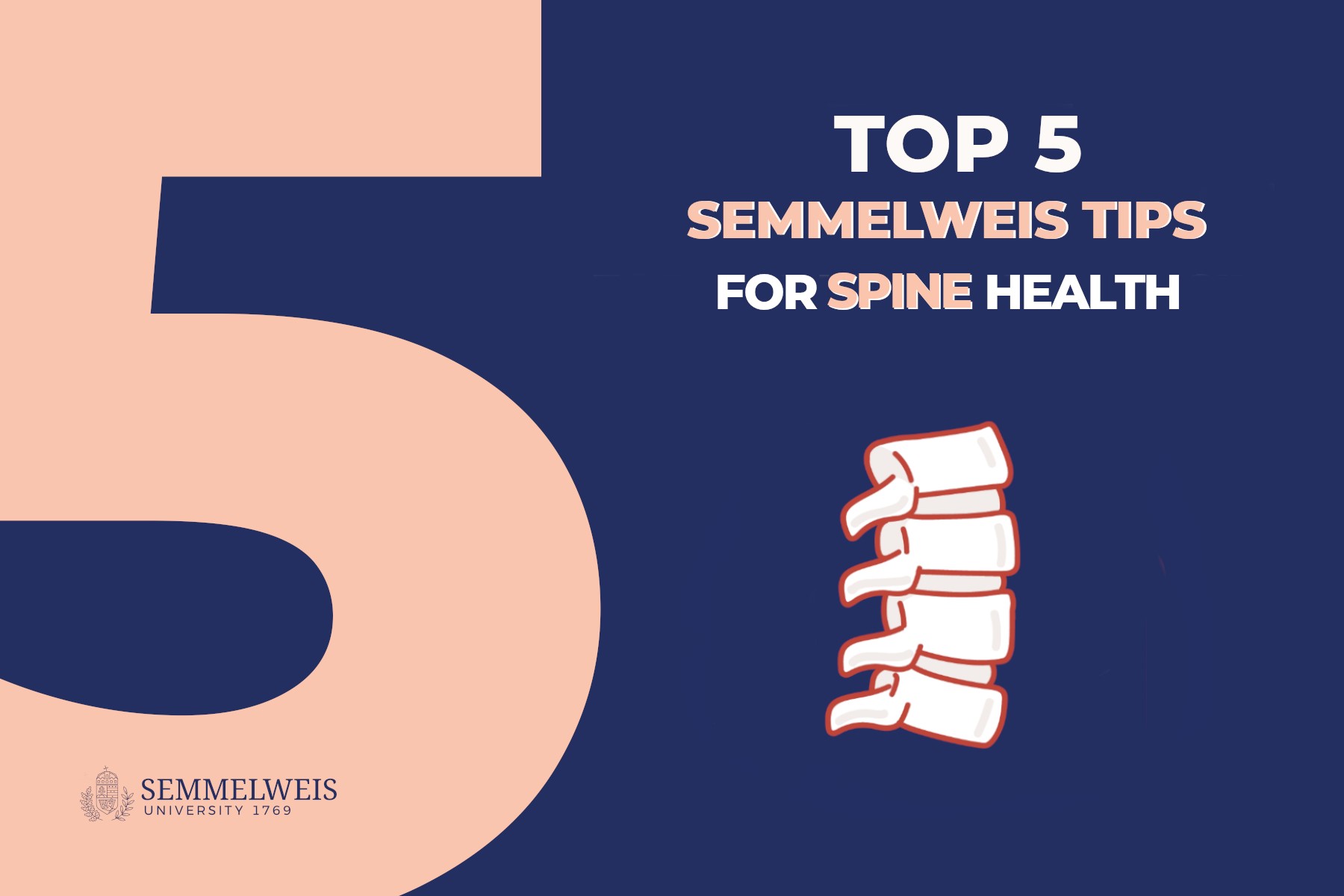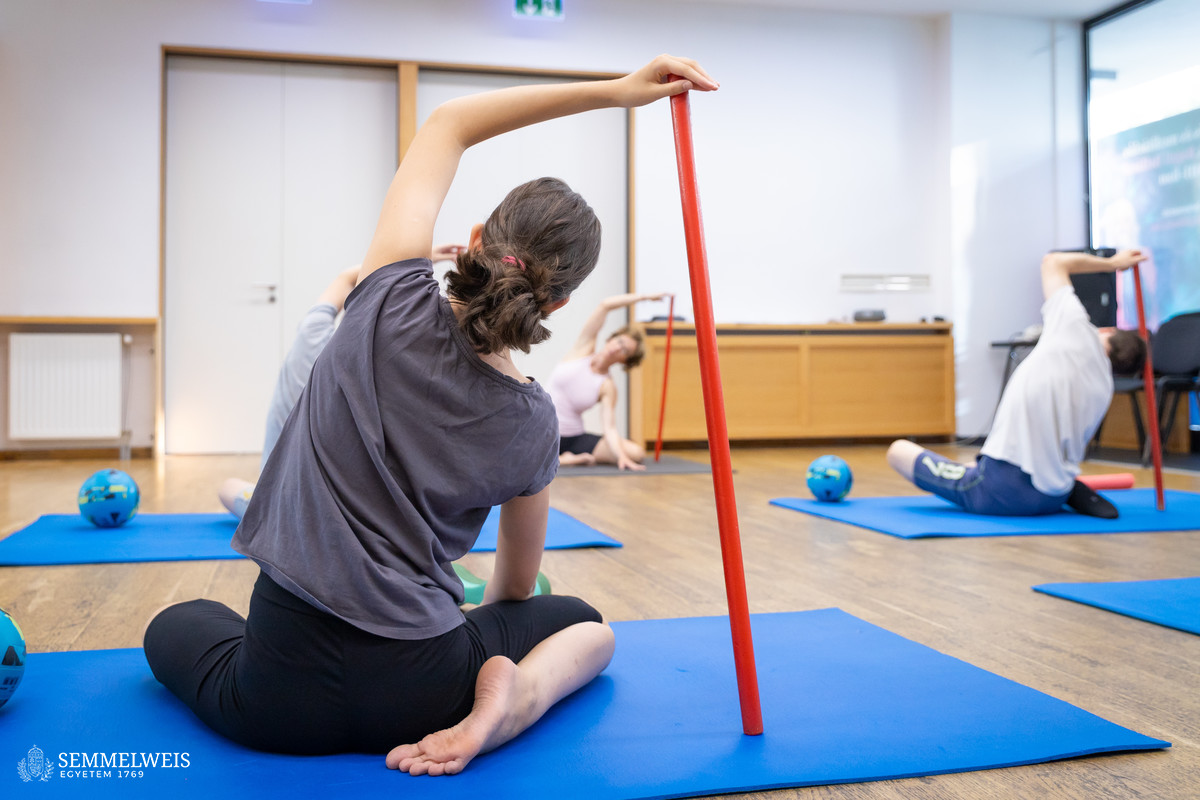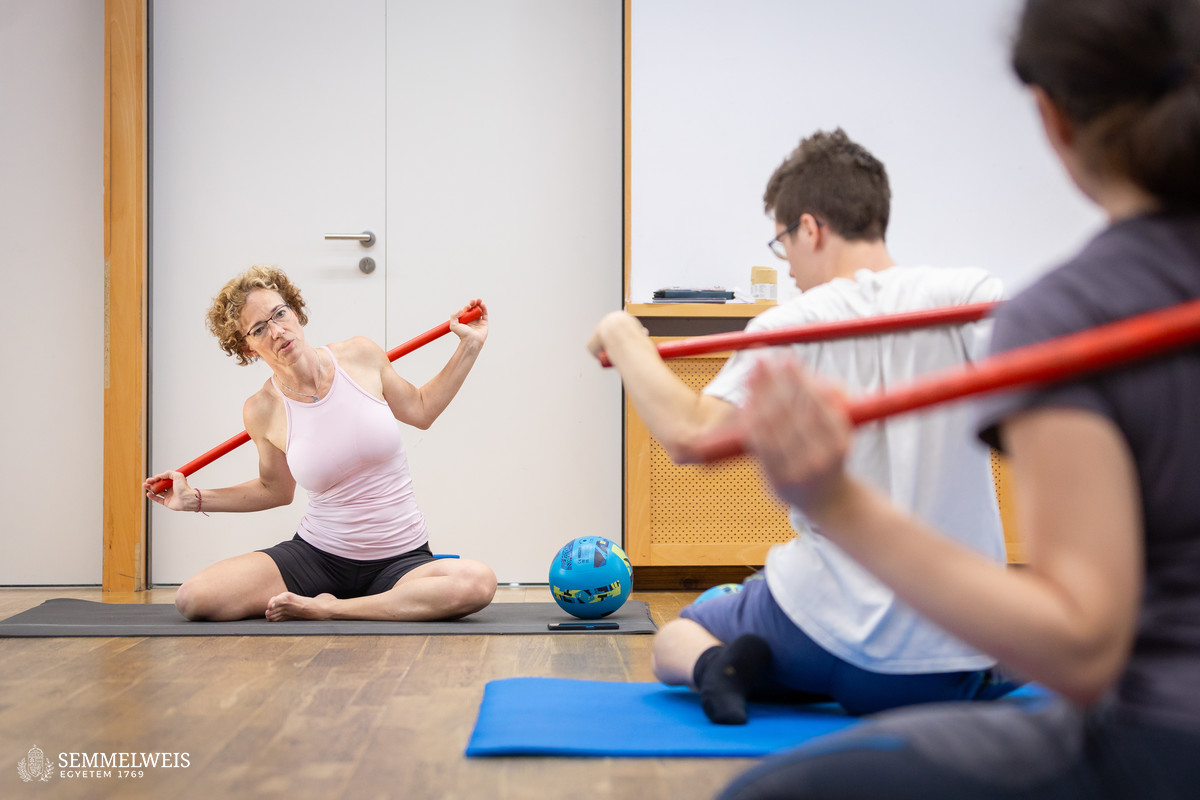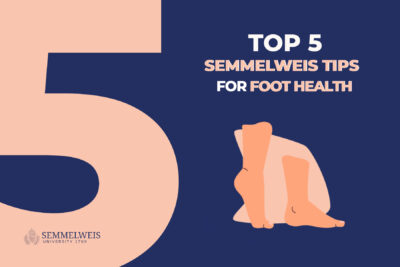1. Early childhood prevention: let children move freely.
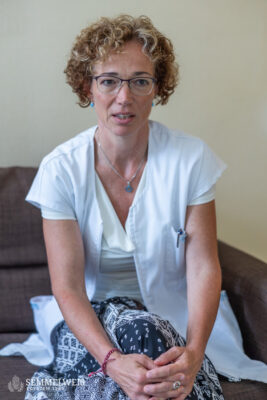 Prevention is paramount for spine health. It is important to allow free movement from infancy and early childhood and to promote the healthy development of movement, Dr. Nikoletta Horváth pointed out. The spinal curvatures develop throughout the different stages of motoric development: In the fetal stage, the spine has a single large forward curve, which is how we are born. In a prone position, lifting the head induces the cervical spine to bend backward (lordosis), a sitting position promotes a healthy forward bend (kyphosis) of the thoracic spine, while the standing position leads to the backward bend (lordosis) of the lumbar spine. Without proper treatment or physiotherapy, postural asymmetries, syndrome of contractures, atypical muscle tone, and hip movement abnormalities detected in infancy can lead to chronic poor posture, spinal asymmetries, and possibly even severe scoliosis. Healthy motoric development is a genetically coded process, which must be facilitated, or rather allowed to “run its course,” the expert stressed. She added that this is essential for the physiological development of the spine and the harmonious strengthening of the muscular system.
Prevention is paramount for spine health. It is important to allow free movement from infancy and early childhood and to promote the healthy development of movement, Dr. Nikoletta Horváth pointed out. The spinal curvatures develop throughout the different stages of motoric development: In the fetal stage, the spine has a single large forward curve, which is how we are born. In a prone position, lifting the head induces the cervical spine to bend backward (lordosis), a sitting position promotes a healthy forward bend (kyphosis) of the thoracic spine, while the standing position leads to the backward bend (lordosis) of the lumbar spine. Without proper treatment or physiotherapy, postural asymmetries, syndrome of contractures, atypical muscle tone, and hip movement abnormalities detected in infancy can lead to chronic poor posture, spinal asymmetries, and possibly even severe scoliosis. Healthy motoric development is a genetically coded process, which must be facilitated, or rather allowed to “run its course,” the expert stressed. She added that this is essential for the physiological development of the spine and the harmonious strengthening of the muscular system.
As a repercussion of physical or psychological inhibition of movement, for example, if there is not enough space to move or the child’s attention is unnecessarily distracted by a monitor or smartphone, the genetically coded program may be blocked, causing harm, Dr. Nikoletta Horváth noted.
2. Screening adolescents is vital.
Regular musculoskeletal check-ups are important from infancy to the end of adolescence, the aim of which is to detect incipient spinal deformities and prevent their deterioration with appropriate treatment, the assistant lecturer said. A seemingly harmless sloppy posture, a bad (hunchback) posture might be fully correctable; however, if left untreated, it can develop over years into a rigid deformity that is difficult or impossible to fix. Such conditions require targeted physiotherapy, as the child will not grow out of them, she stressed.
Dr. Nikoletta Horváth explained that swimming as a universal suggestion for the treatment of scoliosis is a long-debunked misconception and a flawed practice. Years spent swimming are wasted both in terms of prevention and therapy, as swimming is not a substitute for physiotherapy.
With the help of physical and imaging examinations, orthopedic surgeons can distinguish negligent posture from more serious spinal conditions which cause scoliosis, require corseting or even surgery in childhood, as well as from rare developmental disorders. The specialist stressed that the school years are also critical for spinal health because children’s movement is limited due to sitting all day, gymnastics is typically scarce in PE lessons, children are stressed, which also affects their posture, and they also have to carry heavy schoolbags – the latter in itself does not cause scoliosis, but it constitutes an unnecessary burden.
The prevalence of scoliosis is between 1 and 3 percent, while Scheuermann’s disease affects 8-10 percent of the population. In adulthood, scoliosis is the most common musculoskeletal symptom that may result in an inability to work. Between 60 and 80 percent of people experience lower back pain at least once in their lifetime and around 5 to 10 percent of adults experience chronic lower back pain, i.e. pain that lasts for more than three months. Neck problems are more varied, with a lifetime prevalence of around 20-70 percent. Therefore, as a preventive measure, almost everyone should do 30 minutes of spine mobility exercises at least 2-3 times a week from young adulthood, especially those who do not exercise regularly. In the long term, even online spinal exercises can do the trick; however, a lot depends on the specialist who has created them, and it is also worth learning and practicing the correct execution of these exercises in traditional in-person classes, under the guidance of a certified trainer or physiotherapist.
3. Focus on the whole skeletal system, not just the spine.
The key to a healthy spine is to maintain the whole skeletal, muscular, and joint system and to preserve its healthy mobility. If, for example, the hip joint does not move properly, we compensate for the loss of movement with our lumbar spine, which results in overloading or disharmonic movement of the spine, the assistant lecturer explained. Therefore, in the case of spine disorders, it is not enough just to exercise the spine and strengthen the trunk muscles, but it is also advisable to regularly carry out a tailored, whole-body movement therapy, based on the shape of our spine and the nature of our deformity, following the instructions of a specialist or physiotherapist.
4. It is never too late to adopt healthy habits.
Regular exercise, a healthy lifestyle, and avoiding excess weight gain play an essential role in maintaining and regaining spine health. Dr. Nikoletta Horváth explained that the spine neither likes inactivity nor overloading, just like the rest of our joints. Carrying heavy loads or excessive weight, too intense competitive sports, and the prolonged repetition of incorrect movement patterns executed with poor technique during work or training can lead to early degenerative changes in the spine, wear and tear of the small joints, disc degeneration, herniae instability, and blocks. Regular exercise is also fundamental to preventing osteoporosis.
A range of exercises in the office environment and at home can help prevent and treat health problems caused by poor posture due to sedentary work:
5. Make sure to exclude the possibility of a severe underlying disease.
Back or lower back pain can result from serious internal organ diseases or conditions, Dr. Nikoletta Horváth highlighted. In the presence of intractable, non-typical pains not related to movement, one should also consider internal, urological, cardiological, gynecological, and pulmonological diseases, such as stomach ulcers, gallstones, heart or kidney diseases, or, in rare cases, tumors of the spine or spinal cord. Therefore, it is not advisable to start movement therapy without a medical examination, which can exclude the above conditions and give a diagnosis.
Eszter Keresztes
Translation: Judit Szabados-Dőtsch
Photos by Bálint Barta, Boglárka Zellei – Semmelweis University
